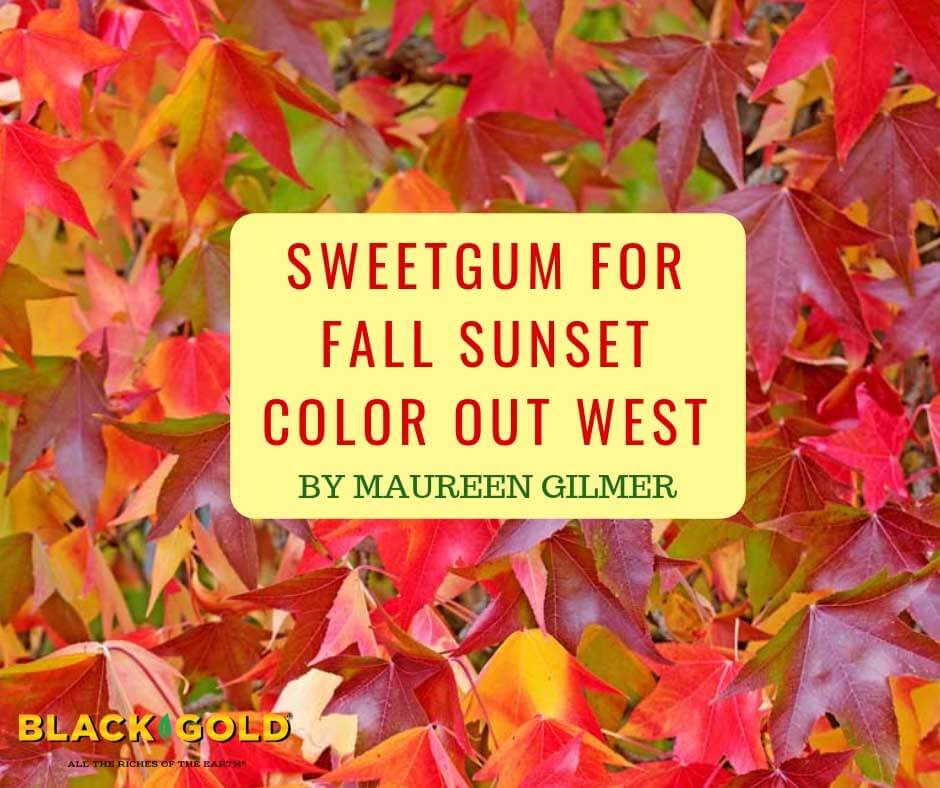
“Red oaks are supposed to turn red in the fall, not brown.” People always ask why their eastern tree colors turn dull and crispy by Thanksgiving in California. “Are you sure you planted the same species I requested?”
I’ve repeated this mistake way too many times to newcomers to the state. When grown in regions with warmer, more arid climates, the chemical process that results in fall leaf color isn’t there for red oaks, pin oaks, maples, and other eastern and northern hardwoods. (Click here to read more about the cause of fall leaf color.)
Eastern Trees in Southwestern Autumns
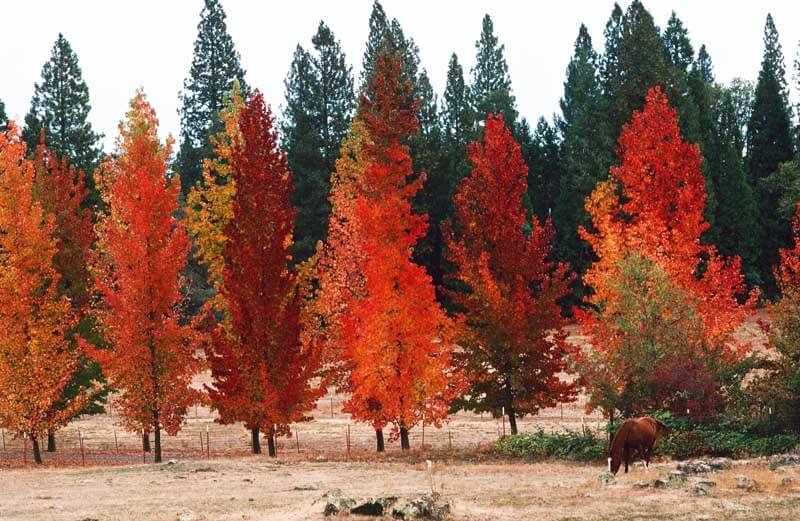
Fall color in these trees is incredibly iffy in California, where resources are less bountiful, and autumn temperatures do not drop at night like they do in the north and east. Where native, the leaves of these hardwoods accrue lots of colorful pigments and they die rather than slowly, declining over a long period in fall to show maximum color once their green chlorophyll is gone. That’s why I recommend one reliable eastern hardwood species to my California clients who miss the autumn color change from back east.
Sweetgum For Fall Color
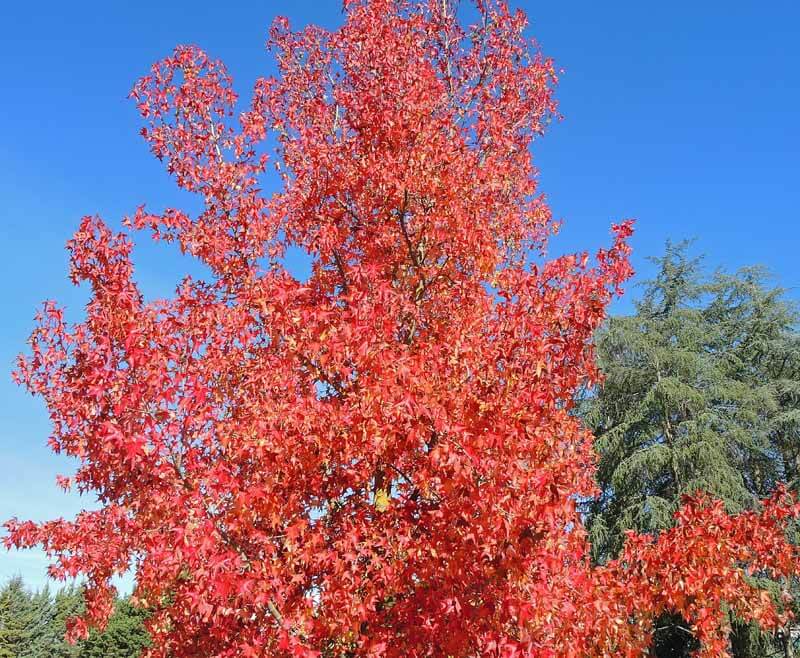
I can always count on American sweetgum (Liquidambar styraciflua) for fantastic color. It’s a native of the American east with a potential four-century life span and height reaching up to 130 feet. I’ve seen them deep in the northern Louisiana bayous proving their tolerance for poorly drained clay soils as well as dry ones. The tree bears amber-like resin which led to the genus name Liquidambar, which means liquid amber. The dried resin (or sweetgum) was sweet enough to be popular chewing gum for Native Americans and settlers alike.
Sweetgum is the only tree I know for a guaranteed rainbow of reliable fall colors along the mild southern California coast and further inland where winter has shorter days and is a few degrees cooler than summer. So, no matter where planted, American sweetgum will perform.
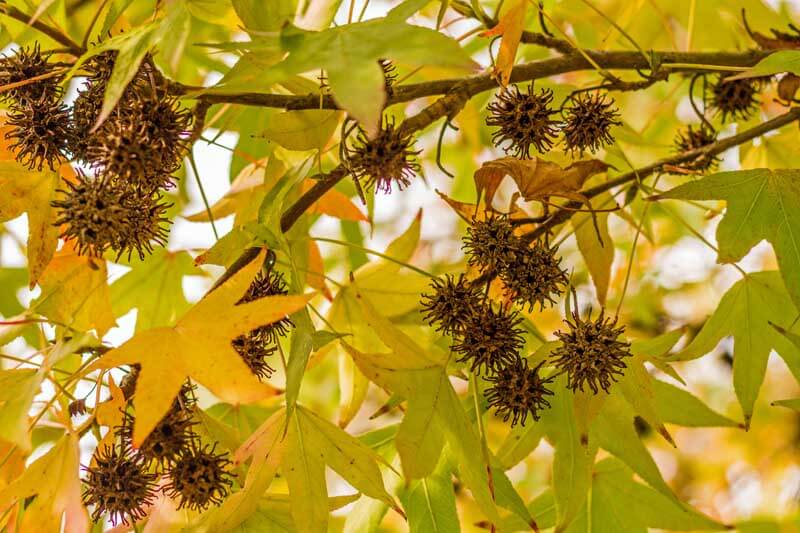
Fall also brings a wealth of prickly, brown sweetgum fruits, which are easily collected and often self-sow. Sweetgums grown from seed yield a great range of color variability. The hues of its palm-shaped leaves can range from vivid magenta to red, orange, canary yellow, burgundy, and dark purple. Among seed-grown trees, each individual displays its colors irregularly, with some darker, others lighter, and a few simply dull. This is why buying or selecting unlabeled or unnamed sweetgum saplings is best done in the fall to see their color.
Over the years growers selected the very brightest seedlings of their seed-grown trees. These were grown separately to study that individual’s color over time to ensure reliable color. Will that color be stable each year? If so, propagating that tree by cuttings would yield identical clones with guaranteed color every year.
Sweetgum Varieties
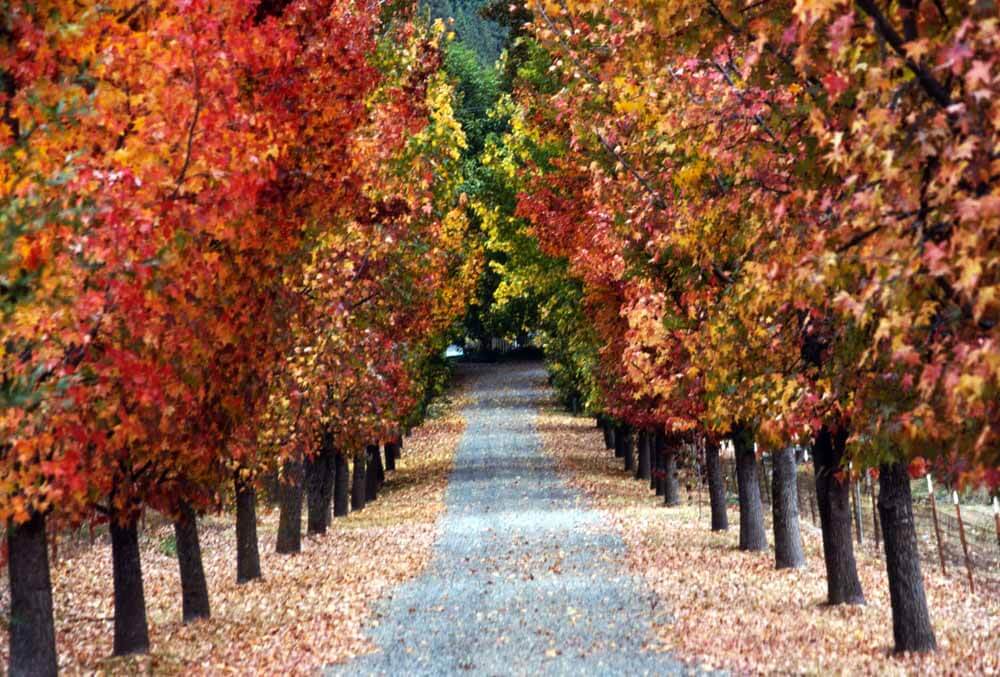
When a new variety is vetted and approved, which takes decades, it’s propagated and given a cultivar and/or trade name. One of the most popular is the narrow ‘Festival’ (20 feet x 60 feet), which is an excellent choice for smaller residential landscapes. Its columnar form fits into tight spaces between buildings. Line several up along a driveway for a stunning entry experience in the fall. This clone offers a virtual rainbow of warm colors that are so powerful they create a focal point for any late-season garden. ‘Festival’ turns super bright yellow, orange, and red in the fall with a few smoky tones and purples. Bear in mind that it is slightly less cold hardy than the species, surviving to USDA Hardiness Zone 7.
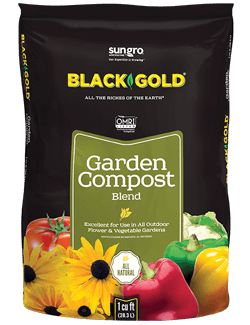 For those looking for stronger reds specifically, consider the fast-growing ‘Moraine’ (Zones 5-8), which is recorded to take slightly more cold than ‘Festival’. It has the perfect dark red to a burgundy color range that makes it a fine alternative to that red oak. Keep in mind that Moraine’s canopy has a more spreading, pyramidal form, which makes it a better shade tree. Plant it as a single specimen tree or in a grove to intensify your yard’s fall color mass.
For those looking for stronger reds specifically, consider the fast-growing ‘Moraine’ (Zones 5-8), which is recorded to take slightly more cold than ‘Festival’. It has the perfect dark red to a burgundy color range that makes it a fine alternative to that red oak. Keep in mind that Moraine’s canopy has a more spreading, pyramidal form, which makes it a better shade tree. Plant it as a single specimen tree or in a grove to intensify your yard’s fall color mass.
One of the best for the Pacific Coast is ‘Palo Alto’ (Zones 6-9), a good clone renowned for powerful bright reds. It is a well-shaped pyramidal tree that’s ideal for groves and makes a nice companion to coastal redwoods (Sequoia sempervirens) and Deodar cedars (Cedrus deodara).
If you do not like the messy fruit of sweetgum, consider the low to no fruiting ‘Rotundiloba’, which has rounded leaves with pretty but highly variable fall color.
Before you take a chance on an unproven tree for fall color, take a good look at sweetgums this fall when they bear their prettiest dresses. Purchase what pleases your eye, then plant with generous amounts of Black Gold Garden Compost Blend to improve water penetration before the winter rains for flawless performance over the next 400 years. (Click here for a complete how-to guide for tree planting.)


